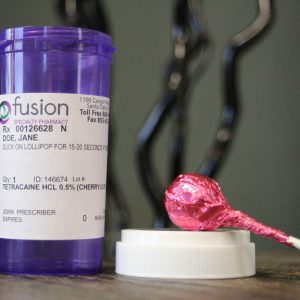Description
Ultra-Low-Dose Naltrexone (ULDN)
What is ultra-low-dose naltrexone (ULDN)?
Naltrexone is typically used at doses of 50-300 mg and blocks the effect of opioids, which helps manage alcohol and opioid addiction. Ultra-low-dose naltrexone refers to the micro-dosing of naltrexone at doses of 2-100 mcg, as opposed to low-dose naltrexone (LDN) doses of 1.0-4.5 mg. ULDN is often prescribed for patients taking opioids, and the micro-dose of naltrexone decreases the side effects of opioids while increasing pain control.
ULDN is a compounded medication and can only be dispensed through a compounding pharmacy. It comes in the form of a capsule or an oral liquid. While some studies have determined effectiveness and tolerability of ULDN, ongoing studies are being conducted to investigate the utility of ULDN and how it works.
What is ULDN used for?
ULDN has been used for opioid dependence or those who have developed tolerance to opiates. The target population for this dose of naltrexone are those who are on escalating doses of narcotics without adequate pain control or those who would like to reduce their dose of narcotics.
How does ULDN work?
Naltrexone is an opioid antagonist, which means that it blocks opioids from binding to opioid receptors in the body. It is thought that at micro-doses, naltrexone actually becomes a weak agonist, meaning that it provides some pain relief without the negative side effects of opioids.
Prolonged opioid use causes tolerance, which is why patients typically require higher and higher doses of opioids to receive the same pain relief benefit. Using ULDN seems to prolong the period of pain relief while reducing physical tolerance.
Patients have reported increased pain relief and a decreased need to increase their opioid dose with the use of ULDN.
ULDN side effects:
One of the most exciting aspects of ULDN is its tolerability and low side effect profile. In fact, ULDN decreases the side effects of opioids, reduces opioid tolerance, and assists in preventing opioid withdrawal. Being a such a low dose, side effects are minimal.
Other cautions:
Make sure to work closely with your pain doctor while lowering the dose of your opioid medications. Abruptly stopping the use of opioids can cause withdrawals.
Self Guided Research:
Listed below are some references to LDN studies and research to help you with your self-guided research:
Dr John Kim’s Presentation on Ultra Low Dose Naltrexone (ULDN) and Micro Dosing (LDN 2018 Conference). LDN Research Trust. (n.d.). https://ldnresearchtrust.org/dr-john-kim%E2%80%99s-presentation-ultra-low-dose-naltrexone-uldn-and-micro-dosing-ldn-2018-conference.
Cruciani, R. A., Lussier, D., Miller-Saultz, D., & Arbuck, D. M. (2003). Ultra-Low Dose Oral Naltrexone Decreases Side Effects and Potentiates the Effect of Methadone. Journal of Pain and Symptom Management, 25(6), 491–494. https://www.jpsmjournal.com/article/S0885-3924(03)00139-8/fulltext
Largent-Milnes, T. M., Guo, W., Wang, H.-Y., Burns, L. H., & Vanderah, T. W. (2008, August). Oxycodone plus ultra-low-dose naltrexone attenuates neuropathic pain and associated mu-opioid receptor-Gs coupling. The journal of pain. https://www.ncbi.nlm.nih.gov/pmc/articles/PMC5469510/.
Leri, F., & Burns, L. H. (2005, September 21). Ultra-low-dose naltrexone reduces the rewarding potency of oxycodone and relapse vulnerability in rats. Pharmacology Biochemistry and Behavior. https://www.sciencedirect.com/science/article/abs/pii/S0091305705002820?via%3Dihub.
K;, M. N. B. T. T. S. M. J. (n.d.). Inhibition of tolerance to spinal morphine antinociception by low doses of opioid receptor antagonists. European journal of pharmacology. https://pubmed.ncbi.nlm.nih.gov/17307158/.






